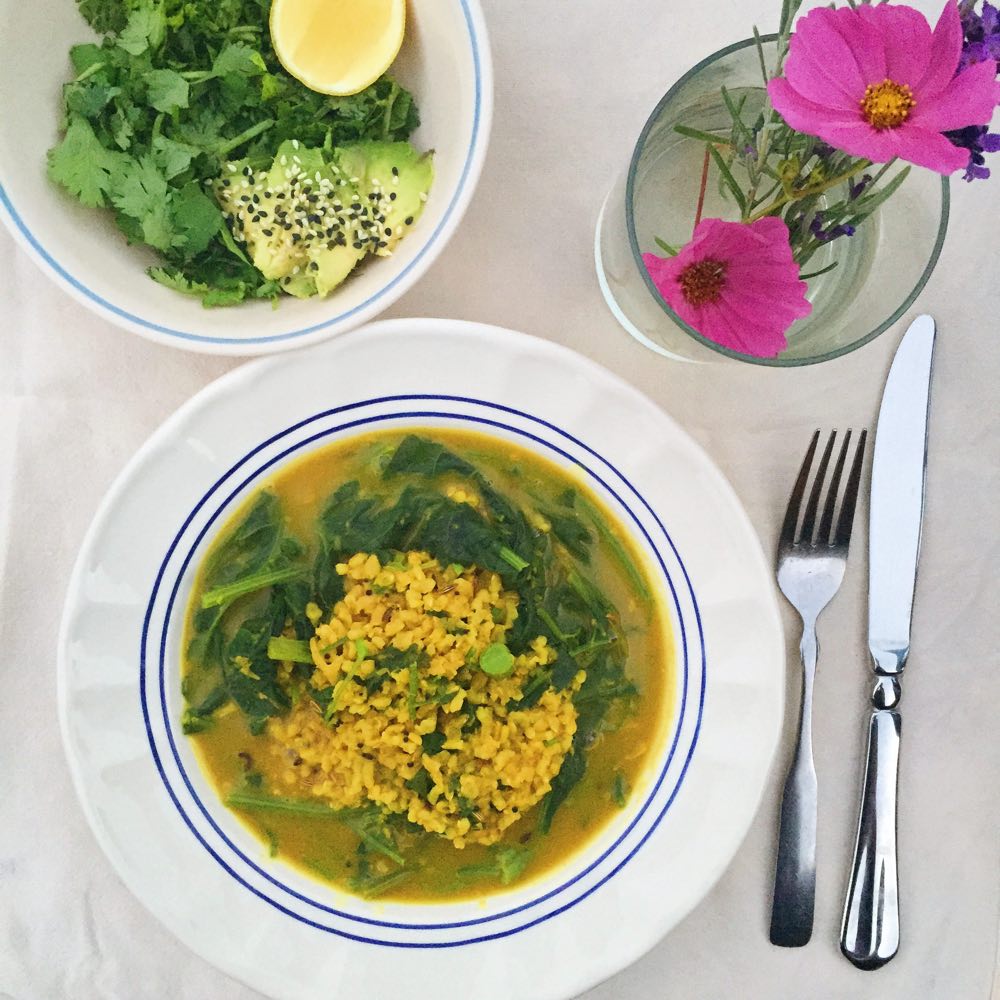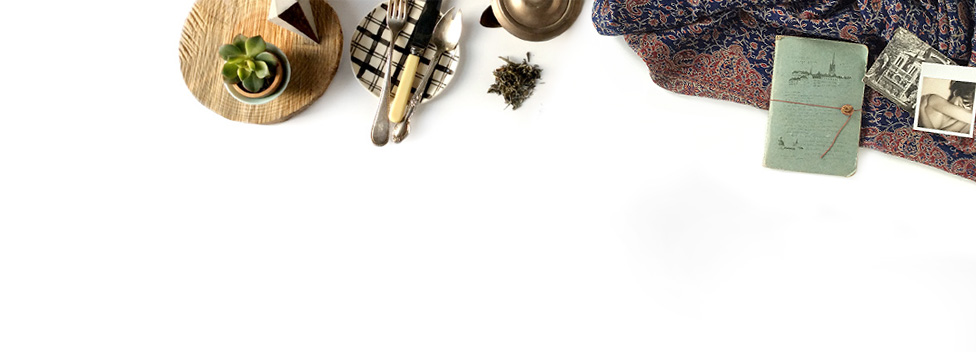Feels Like Home Ayurvedic Kitchari
6 August 2015 | BY ANDJELKA JANKOVIC | Travel

It's been a while since your heart had a home
Gluten free, vegan (inspired by The Broad Place)
I am seven weeks into my adventure from Australia to Bali to North America – I’m currently traveling along the West Coast (San Francisco, Lake Tahoe, Yosemite National Park, Portland, Seattle, Eugene and the Oregon woods) before heading to the Mid West. For all my constant movement I have been eating remarkably well on the road, but find that I am craving Ayurvedic Indian food the most. Enter stage left: Kitchari – a simple, grounding and satisfying bowl of mung daal, brown rice, seasonal greens, coriander and a medley of fragrant spices that makes me feel like I am home (not that I am at home, more on that later).
When I arrive to a new place and my body is aching for a massage, I make kitchari. When I am tired and want a hot bath with candles, I make kitchari. When my heart is bursting with the love for the people I have met, I make kitchari. When my spirit is sad from another goodbye, I make kitchari. When my soul craves delicious comfort food, I make kitchari. When I remember that home is not a place but a state of being, I make kitchari.
I cook this recipe the most – for my family in Perth, a large sharehouse in San Francisco, a small cabin in Oregon – it’s a one pot wonder to feed a group of merry friends or as an easy meal for one lasting several days. I also make Kitchari when I need a gentle digestive cleanse, like after going a little too crazy at Pacific Northwest farmers markets (Peaches! Huckleberries! Purple potatoes! Blackberries!) or when I notice I have slipped backed into a niggling sugar pattern.
Kitchari is to India, what Grandma’s chicken soup is to the West. It is a food-as-medicine remedy for an upset stomach, the first signs of a cold or flu, and a rundown body. Traditionally in Ayurveda, this dish is prepared mindfully and not in a hurry (I like to listen to Iron & Wine). It is deceivingly simple to make and wholesome for the soul. In India, Kitchari is typically prepared fresh and not reheated. On the contrary, I always make a big nourishing pot and leave leftovers for lunch the next day. The flavours really develop overnight and it is the perfect meal to keep me feeling light and bright. My colleagues would often swarm around my lunch, and it’s a nice idea to bring an extra serving for someone in the office who is feeling a little down or for the person who has perfected the coffee-and-cookie lunch.
A wonderful aspect of traditional Ayurvedic Kitchari is that it is a mild (and often welcome) detox for the body. The healing spices and herbs used in the dish give your overworked digestive system a purifying clean out. Turmeric is a powerful anti-inflammatory super spice, fennel seeds aid digestion, mustard seeds are a rich source of health benefiting minerals, mung dal is a hearty dose of protein and fibre, while the gently cooked seasonal greens give your body respite from processed, hard to digest foods. When combined, your agni (internal fire that powers digestion and metabolism) is activated and toxic materials are evacuated from the body. Yep, be prepared for regular dashes to the bathroom as your body begins to clear out congestion and gradually puts a spring back into your step.
The magic of Kitchari is that you can eat it for breakfast, lunch and dinner – I like to have small bowls across the day so that I fill up without overloading my digestion. Trust what your body is telling you and enjoy the ride.
Makes enough for 1-6 people, or one giant pot for you over a few days.
INGREDIENTS
1 cup yellow mung daal, soaked
1 cup long-grain rice (I like to use basmati but jasmine also works), soaked
2 tablespoon ghee or coconut oil
1 tablespoon fresh ginger, grated
1 1/2 tablespoon cumin
1 1/2 tablespoon turmeric
1 teaspoon cinnamon
1 tablespoon mustard seeds
1 tablespoon fennel seeds
2 big handfuls of baby spinach, chopped
2 cups of frozen peas (or hopped string beans if you prefer)
1 bunch coriander, stalks removed and chopped and leaves roughly chopped
1 lemon, cut into wedges
Sea salt and cracked pepper, to taste
METHOD
Soak mung daal and rice separately for a few hours or overnight, then wash three times and strain.
Get the first spices — cumin, turmeric, and cinnamon — measured and ready.
Melt ghee or coconut oil (if you want to make it vegan) in a large pot, add fresh ginger and fry it off on low to medium heat for 3 minutes making sure it doesn’t burn.
At this point, I like to add the chopped coriander stems and sautee into the mix until soft.
Add cumin, turmeric, and cinnamon on low heat — taking care not to burn the spices as they will taste bitter.
Add mung daal and rice to the pot and stir through the spices for 2 minutes.
Add enough cold water (spring water or filtered if you can) until it is covering about 3 cms above the mixture (you can’t go wrong as you can add water again if you want it more soupy)
Turn up to high heat, bring to the boil and then cover with a lid and let simmer on medium heat for 20 to 30 minutes until the water is absorbed and the rice is cooked.
Meanwhile in a frypan on medium heat, combine mustard seeds and fennel seeds and dry fry on low heat until the mustard seeds pop and set aside.
Prep the spinach leaves and frozen peas (or string beans) so they are ready to go.
When the kitchari is cooked, stir in the mustard seeds and fennel seeds.
Add the chopped baby spinach, and frozen peas or chopped string beans and stir in.
Squeeze the juice of half a lemon in the mix and season with sea salt (I add a lot!) and cracked pepper, then cook with lid on for 5 minutes or until veggies are done.
Serve in bowls with fresh lemon wedges, coriander leaves, and more salt and pepper to season to taste.
LOVE NOTES
Kitchari is ready when all the water has absorbed (like a porridge), or I prefer a soup-like consistency as it keeps better when reheated the next day.
It is important to use mung daal (not chana daal or lentils) as they are the easiest legume to digest and don’t skip the soaking process as it breaks down the hard-to-digest phytic acid and makes more nutrients available for absorption.
Traditionally the recipe calls for white rice but you can use brown rice, just extend the cooking time.
I also love eating kitchari with small (non-traditional) accompaniments like avocado, drizzled tahini, sesame seeds, and sunflower seeds. Or anything else you like.
Store in the fridge for up to three days and best to re-heat in a saucepan if you can.


